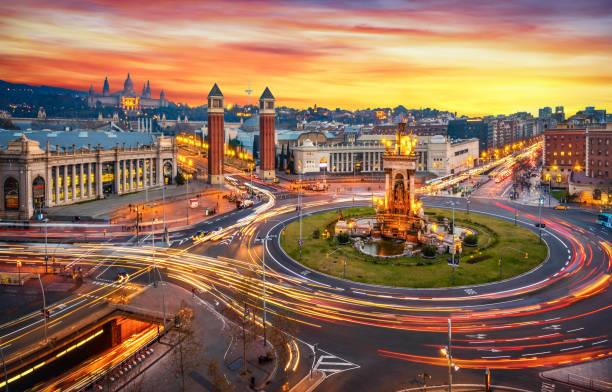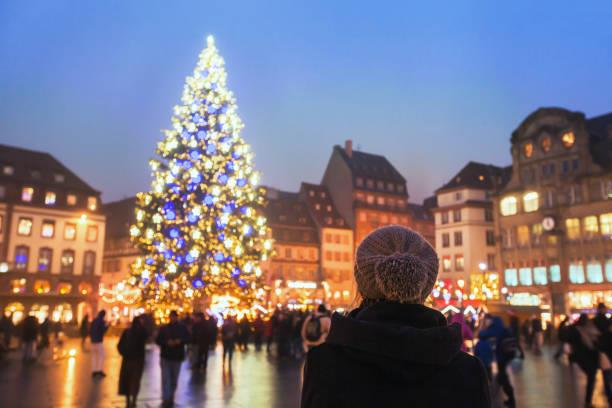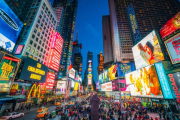Landscape Lighting Design Case Study Part Ⅰ
1. Brief introduction
Lighting performance is an important factor in rendering the atmosphere of a space.
The means of lighting expressiveness in decorative and artistic lighting is to use the expressiveness of lighting to beautify the square environment space.
Using the coordination of the shape of lights and their light and color, the environmental space has a certain atmosphere and artistic conception, reflects a certain style, increases the beauty of the city square, and makes the square environmental space more in line with people’s psychological and physiological requirements, so as to enjoy the beauty and enjoyment. Mental balance.
Therefore, in the design of square lighting, we should devote ourselves to using the expressive power of lighting to artistically process the environmental space to meet the requirements of people’s visual psychological function.
Practice has proved that the spatial effect displayed by the light, the rendering of the square buildings and objects by the light, the sculpture made by the light, and the pictures made by the light, have a very attractive charm and play a rich artistic effect.

2. The main effect of lighting expressiveness
(1) Rich spatial content
In modern lighting design, the use of the ups and downs, the looming, the virtual and the real, the dynamic and the static of the light, as well as the control of the angle and range of the light.
By establishing the composition, order, and rhythm of light, it can greatly render the changing effect of space, improve the proportion of space, limit the scope of space, emphasize the center of interest, increase the level of space, and clarify the direction of space.
The photopic effect can be highlighted in a background with low ambient brightness through light and dark contrast to attract people’s visual attention.
(2) Decorative space art
The decorative effect of lighting can embellish or enhance the artistic effect of the space through the shape, texture and arrangement of the lights themselves.
However, only when the selection of lights and lanterns is in harmony with the square environment, can the decorative expression of light be more effectively reflected.
Lighting plays an important role in plaza construction.
The artistic treatment of lighting fixtures plays the role of icing on the cake and the finishing touch to the square environment, so that the square environment space reflects various atmospheres and tastes, and reflects the style of the square.
The expressive power of lighting is not only related to the shape of the lighting fixtures, but also integrated with the shape and color of the square space.
When the lights illuminate the buildings, water bodies, plants and other environmental facilities in the square environment, the beauty rhythm of these facilities is revealed with the help of light and shadow effects.
If the light and color factors are further considered, this beautiful rhythm will add a magical mood.
When the light is combined with the flowing water in the square, especially with the voice-activated fountain, the flickering broken light and the strings of light beads add a wonderful artistic charm to the square space.

3. The existing problems of the night space environment of the city square
3.1. One of the existing problems
The urban square lighting environment planning and design form is closely related to the social and economic development model.
The rapid development of my country’s cities, society and economy is the rapid change in the scale and spatial form of urban squares. As people’s market concepts tend to mature, people are increasingly transforming the night environment of urban squares.
However, since the beginning of the 21st century, my country is still in a period of development, the level of urban development is unbalanced, and some urban economic development levels are not allowed, the planning and design of the lighting environment of urban squares are restricted in all aspects.
The specific manifestation is that the capital investment in the lighting environment of the city square is large, and it is included in the planning and design of the entire city lighting environment. Only the lighting of the city square cannot form the overall beauty.
The urban lighting environment needs to consume a lot of electric energy. In today’s energy shortage, this seems to be contrary to the international social theme of energy saving.
Therefore, some people think that the lighting environment of the city square causes waste of economy and energy, and question the necessity of planning and design for the transformation of the lighting environment of the city square.
3.2. The second existing problem
At present, in many cities in my country, the night space environment of the square is still dominated by a single lighting function, while ignoring the main body of the square—people’s psychological and physiological needs.
In some cities, the square is only used as a place for people’s activities during the day, and the lighting at night is only barely illuminated, and sometimes even the basic number of lighting fixtures cannot be guaranteed, which is far from the environmental quality requirements of modern urban night landscapes.
However, some cities unilaterally believe that in order to improve the night economy, it is only necessary to improve the lighting environment of the commercial street, so that the general public is faced with the business, the downtown area is bright, but the square is very depressed, which creates an invisible outdoor environment for the citizens at night. single.
3.3 The third existing problem
In some economically developed areas, city squares have become the preferred area for people’s night life.
And these urban squares, even if they have been “lit up”, are still misused or misused to varying degrees.
The problem of light pollution in the square at night is becoming more and more serious, which greatly affects the quality of people’s night life.
Nowadays, the concept of image building has been deeply rooted in people’s minds. In order to expand the popularity of their own images, some enterprises and even some governments and individuals have set up their own billboards and advertising towers in urban squares without planning and design. High and bright.
The final result of their combination is the unconscious loss of the city’s image, pollution of the night environment of the city square, and great harm to the citizens.
3.4 The fourth existing problem
Although several cities in China have realized the importance of developing the night landscape of the square, they have done a lot of practical work.
However, the design of squares in my country in the past generally did not consider the lighting environment of the square, especially the art of the lighting environment.
Even though some squares are lit necessary at night, they are “external objects” added after the main body of the square is completed.
Spontaneous and disorderly development without overall planning and design and coordinated management of artistic effects will produce some counterproductive results.
Such as causing light pollution, destroying the ecological environment, and even affecting traffic safety.
3.5 The fifth existing problem
Initially public lighting was introduced into urban areas as a means of reducing crime against persons and property.
Today, crime and vandalism remain a major problem in many public places and square environments. Fraud, theft, sabotage and even terrorist crimes are more or less common in many city squares.
Even cities with a very strong modern civilization still have this problem in public areas and squares.
For example, in some squares in Shenzhen, due to insufficient lighting, people may be stolen if they are not careful when they are resting in the square.
Many surveys have shown that good lighting can reduce these negative aspects of social life.

4. Urban plaza environmental lighting design goals
Image, function and environment are the basic contents of modern square lighting planning and design.
These are the three aspects that we should consider when evaluating the planning and design of the urban square lighting environment, and the factors we should consider in the process of designing the urban square lighting environment.
(1) Scope and scale
The form and scale of the square are different, and the planning and design methods of the lighting environment are also different.
(2) Status and positioning
Positioning mainly refers to the location of the city square lighting environment we designed in the city or region. Is it for the whole city or a district?
(3) style
In fact, positioning has some relationship with function, image, style and so on.
The positioning also includes a content that is a standard, whether it is an international standard or a function that is more in line with the local standard, mainly from the use of people.
Style, including continental style, or more traditional Chinese garden style?
Is it more open at the beginning, or more closed and secretive?
These need to be analyzed on a case-by-case basis.
The shape of the city square can be closed or open, with regular geometric shapes or irregular shapes combined with natural topography.
With the improvement of living standards and the acceleration of the pace of life, people pay more attention to the fun and humanization of urban public spaces. People’s requirements for the open space of squares no longer simply pursue artificial visual order and solemn and majestic artistic effects, but also hope It has become a place of comfort, convenience, safety, rich spatial composition and beautiful lighting environment to meet people’s increasing physical and psychological needs.
Therefore, this point should be fully recognized when planning and designing the lighting environment of the square.
The lighting environment construction of the city square should first be designed in accordance with the nature, scale and main functions of the square, so that the square can better play its role.
The buildings around the city square are usually important buildings and the main symbols of the city.
Lighting should be fully utilized to complement and contrast architectural groups as a means of spatial connection.
Make the urban square space environment of the night space more colorful and full of life.
The lighting environment layout of the city square should also consider the scale and space scale of the square, so that the lighting can better decorate the square, beautify the square, improve the microclimate of the square, and provide a comfortable, convenient and vibrant place for night activities for citizens.




